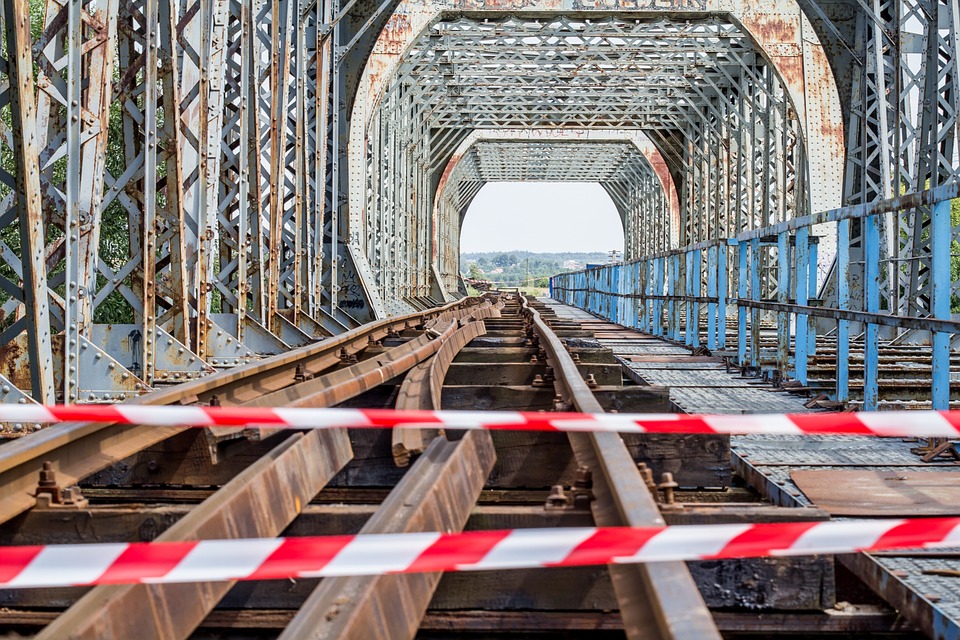In the coming weeks, Trump is expected to release a 70-page policy outline, detailing the principles behind his plan to rebuild the country’s aging roads, bridges, railways, airports and water systems. But after a year of bruising partisan battles, there are questions about whether Democrats and Republicans can come to an agreement on infrastructure investment, often thought of as the most bipartisan issue in Washington.
According to Michele Nellenbach, director of the Bipartisan Policy Center’s infrastructure program, if President Trump releases his infrastructure plan in January, on schedule, both parties may be able to come together on a long-overdue infrastructure spending bill before the 2018 midterm elections begin to sway the political calculus for lawmakers.
“Infrastructure is a win-win for everyone,” she said. “Republican, Democrat, no matter who you are you can go home and say you did something for your district. So it’s a win. And we’re hoping that motivates [members of Congress] to work together and get it done.”
In order to meet the demands of a 21st-century economy, the American Society for Civil Engineers has estimated the government and private sector have to spend roughly $2 trillion to close the infrastructure investment gap by 2025.
That is an extensive gap, according to the ASCE, which gave the nation’s infrastructure a D+ grade in its latest report. What that means practically is that many structures are “mostly below standard,” nearing the end of their service life and some posing serious concerns “with strong risk of failure.”
From congested highways, airports and seaports to poor water treatment facilities, an aging electrical grid and parts of the country without access to high-speed internet, the lack of investment is costing the United States close to $200 billion per year.
Democratic Rep. John Delaney of Maryland has worked on bipartisan infrastructure plans for years and he sees a strong chance of Congress passing a bill this year.
“I think there’s an opportunity to do something,” he told Sinclair Broadcast Group, noting that Democrats have been talking for a long time about investing more in infrastructure. “The devil, or god, is in the details.”
On the campaign trail, Trump proposed a trillion-dollar infrastructure spending package to “rebuild America” counting on contributions from the private sector and regulatory reform to spur investment. Shortly after Trump took office, Democrats signaled a willingness to work with Trump on the issue and put forward their own outline for $1 trillion in direct federal government investment.
All sides seem to agree on a baseline of $1 trillion, but finding agreement on where that money will come from is a much thornier problem that members of Congress are expected to tackle as they return to Washington next week.
WILL INFRASTRUCTURE INVESTMENT BE BIPARTISAN?
After passing a massive tax overhaul along strict party lines, Donald Trump insisted that his next big piece of legislation to rebuild America’s infrastructure would be an easy political lift.
“Infrastructure is by far the easiest. People want it — Republicans and Democrats,” Trump said at the end of December. “I really believe infrastructure can be bipartisan,” the president added, promising, “we’ll be having that done pretty quickly.”
Trump’s allies in Congress are again suiting up in the hopes of securing another major victory for the president. Pennsylvania Rep. Bill Shuster, the chairman of the House Transportation Committee, announced on Tuesday that he will retire from Congress at the end of the year after helping Trump shepherd an infrastructure bill through Congress.
“Rather than focusing on a re-election campaign,” Shuster said, “I thought it wiser to spend my last year as Chairman focusing 100% on working with President Trump and my Republican and Democratic colleagues in both Chambers to pass a much needed infrastructure bill to rebuild America.”
Unlike the president’s partisan achievements of 2017, any infrastructure bill will need buy-in from Democrats.
Senate Majority Leader Mitch McConnell acknowledged this fact at an end-of-the-year press conference. “There’s not much you can do in the Senate on a partisan basis,” McConnell said, noting that in the new year, Republicans would have to reach across the aisle.
Republicans in the Senate are also kicking off 2018 with one less vote after losing the Alabama seat to Democrat Doug Jones. Having a smaller majority and fewer opportunities to push through major legislation using budget reconciliation means if either side hopes to secure infrastructure investment, they will have to work together.
After last year’s battles over health care and a tax reform bill that passed without a single Democratic vote, Nellenbach has some concerns that the “hard feelings” on the left may not be as easy to overcome as President Trump may have hoped.
“I think infrastructure would have been easy had it come first, but also if there were still some revenue options on the table,” she said.
While both parties are likely to reach an agreement on broad policy issues, the big question is how to pay for it.
WHAT DO WE KNOW ABOUT TRUMP’S PLAN?
So far the White House has released precious few details about the president’s infrastructure plan. The president’s 2018 budget included $200 billion dedicated to infrastructure spending, money that cut from discretionary domestic spending programs much to the chagrin of many Democrats. Trump has also slashed regulations in order to cut project permitting time from an average of ten years down to only two years.
While some Republicans have expressed interest in public-private partnerships, where private investors front the cost of a project and recoup their money through tolls or other means, Trump reportedly rejected the funding scheme, telling lawmakers the arrangement “doesn’t work.”
According to other reports, the trillion-dollar infrastructure package may be as small as $200 billion in federal money with the president looking to state and local governments to raise a significant portion of the remaining $800 billion in increased taxes and spending cuts.
“It’s a creative way of getting to his trillion-dollar investment, which is what he campaigned on,” Nellenbach said, noting Democrats are not likely to rally behind such a plan. “I think there’s some sense that if state and local governments had $800 billion worth of new taxes to raise, they probably would have done it.”
That leaves a big question mark in place of a dollar sign.
Rep. Delaney worries that the plan that Trump sold as a trillion-dollar infrastructure investment fund will be repackaged by congressional Republicans as domestic spending cuts and “overreaching” regulatory reforms, that go beyond what Democrats would agree is appropriate.
“I think it’s somewhat fatally flawed,” congressman said of Trump’s preliminary plan. “Because to do anything of significance in infrastructure, you need some funding from the federal government.”
He continued that if the Republicans hope to earn Democratic support, they will have to find new sources of revenue. That could mean adjusting the gas tax, introducing a carbon tax, or doing something that could cause some major heartburn for Republicans.
REOPENING TAX REFORM
According to the Bipartisan Policy Center, Congress had the chance to hit two birds with one stone by working an infrastructure financing strategy into their massive tax overhaul.
“The tax bill would have been an opportunity to generate revenue to pay for infrastructure,” Nellenbach said, noting that after the tax bill, there are fewer revenue options on the table.
As just one example, there were a number of additional opportunities for tax credits for investing in infrastructure. Even the tax bill’s provision encouraging corporations and entities to repatriate their overseas holdings could have offered a revenue stream to put towards infrastructure.
Rep. Delaney still sees areas in the tax reform bill where adjustments can be made and additional revenue can be generated to rebuild the country’s crumbling infrastructure.
“One of the things that should happen is we should effectively fix the tax reform that was just done,” he said, insisting that the way to secure new federal funds for infrastructure is directly related to tax reform.
For example, Delaney suggested revisiting the new corporate tax rate, that was cut from 35 percent to 21 percent. Raising the rate up to 25 percent would have generated hundreds of billions of dollars that should be used for infrastructure, he said. “I think they really missed the mark there.”
While the option may be tempting for Democrats, Republicans may not be willing to reopen the tax bill so soon after their hard-fought partisan victory.
But if they are not willing to meet at least some of the demands from Democrats, there is little chance of the bill succeeding. “There’s a bipartisan deal if it involves some new revenues and some smart regulatory reforms,” Delaney said. “And there’s probably not a bipartisan deal if it’s just overreaching regulatory reforms combined with cuts to other programs.”






